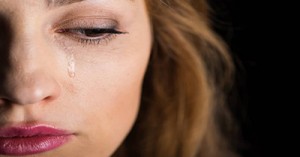Within early childhood settings and as part of the daily routine, group time has become a teaching strategy in order to gather children together to have discussions, read stories, sing songs etc. The following article provides information on What Is Group Time, When To Have Group Time, What To Do During Group Time, Managing group Time and more.
What Is Group Time?
Group time is a scheduled (or unscheduled) time when the room educator and the children come together as a community of learners. To share thoughts and ideas, listen and converse with each other, participate in new learning experiences, introduce new concepts, read together, sing together and collaborate with one another.
When to Have Group Time?
In a routine, group time can be used at the beginning of the day to provide information to children of what experiences and activities are on offer throughout the day and it also can be used at the end of the day to reflect back on the day’s events and to signify that the day has come to an end.
Group time can also be used when children are not engaged in the activities on offer and seem to be getting bored or restless. During this time, having a spontaneous group time of playing a game such as duck duck goose or parachute games, will enable the children to focus their attention and give them a sense of belonging within the group.
What to Do During Group Time?
Group time needs to be more than reading a story, singing a few songs and playing a few group games just to get the children settled before transitioning to another activity. These can be incorporated within the group time however it shouldn't just end with these. Group time should be planned and thought out in advance.
The children should be enthusiastic about group time and want to participate in the experiences planned. It shouldn't be a time for children to “sit and listen” to the educator but rather the children should be actively involved. Yes, group time is a great opportunity for educators to engage in intentional teaching and teaching moments however it’s how you deliver these teaching moments that make a difference during group time.
Here are some ideas on what to do during group time for the following age groups:
Babies
-
Use puppets during songs/rhymes as visual stimulation
-
Sing finger plays
-
Blow bubbles for babies to reach and pop
-
Play different types of music, fast, slow, upbeat
-
Read simple stories
-
Group painting
-
Sensory group experiences such as goop, finger-painting etc.
-
Use flashcards/figurines/props to identify common objects, animals etc.
-
Play different animal/transport/everyday sounds for recognition
Toddlers
-
Group games such as parachute games, ball games (kicking, rolling, and bowling), tunnel ball, bean bag toss, red light green light etc.
-
Use felts when telling stories and songs for visual representation
-
Explore concepts using hands-on objects (opposites, colours, shapes, animals etc.)
-
Group discussions on current interests using simple vocabulary
-
Use an A3 sheet of paper/book to write down children’s points of view during discussions
-
Name recognition using photo and name cards
-
Read stories based on interests
-
Music and movement (musical chairs, musical spots, musical freeze,
-
Science experiments (making slime, volcano, melting and freezing etc.)
-
Cooking Experiences
-
Build upon language skills by playing language games such as rhyming, sounding out letters etc.
Pre-schoolers
-
All of the above including:
-
Give opportunities for children to share what is on their minds, what they did on the weekend, what did they during the morning etc. to start up conversations.
-
Provide interesting items to share based on current interests. For example: if current interests is insects items can include magnifying glasses, insects in glass, books of insects, fruit, leaves, sticks, etc. These items can be placed within the circle to encourage the children to discuss how these items can be used and how they relate to what they know about insects already.
-
Have open discussions with the children. Encourage children to sustain a question, and think about their thoughts and those of their peers.
-
Show and Tell – promote discussion and sharing. Not everyone needs to share and children should be the primary talkers. Also for show and tell it doesn't have to be an item a child brings from home. It could also be an experience or even a child’s thoughts or ideas.
-
For calendar time – use one that has pieces that can be manipulated and re-arranged as it provides more participation and engagement. Use calendar time to discuss shared experiences (that could have happened over the weekend, an excursion or incursion), such as before and after, first this happened and then this etc., birthdays of peers, special occasions of families and those within the centre etc.
-
Inform children of the day’s activities and experiences or discuss what they enjoyed the most about the day (write these down as a group reflection which can be used as part of the documentation).
During group time children should have the opportunity to share their ideas, engage in conversation, listen to others, develop and practice their skills within a social group and gain information and knowledge from fellow peers and educators.
Managing Group Time
Here are some simple strategies to use to create a successful and manageable group time:
- When working in a room with a large number of children, break the group up into smaller groups. The room educators can review the focus points, discussions, and teaching strategies beforehand to implement with each group of children.
- Choose an area that has fewer distractions (remove toys, activities and anything that can take the focus away from group time) and provide children with a comfortable space.
- All children should be able to view items. Sit children in a circle so items can be displayed in the centre and seen by all children.
- It’s not necessary to wait until all children have joined before starting, begin after a few children have gathered and others will follow. Start off with a group time song to sing to signify it is group time.
- Keep group time for 15 minutes. For babies 5 minutes and for toddlers 10 minutes. However, if group time is going well and children are responsive and interested then continue on for a further 5- 10 minutes. Some days group time may not be going well, children are not being attentive or things are not going according to plan When this happens stop group time and transition onto the next part of the routine. There is no need to try and continue as it will make everyone frustrated.
- Watch and attend to children’s behaviour. When leading a group discussion get other educators involved in sitting with the children and dealing with any misbehaviours that occur. Do not keep starting and stopping to attend to behaviours as this will distract the entire group. For those children not interested set them up on a mat with another educator to do quiet activities until group time is over.
- Avoid doing most of the talking. The goal if for the children to develop their oral and language skills.
- Group time should also include music and movement.
- Plan group time to offer interesting and valuable experiences to the children. Use this as part of intentional teaching.
- Be enthusiastic and excited as you set the tone for how group time begins and ends. If you are not interested then the children won’t be interested either. Put on a happy smiley face and have fun.
One of the big factors in managing group time is not to make it compulsory. Children should not be forced into participating in group time. When a child is ready to participate or is interested in what is happening then they will join. Most of the time all children will join in especially if it’s interesting.
Strategies for Group Time
- Gather tools, items and materials that children can touch and manipulate to extend their understanding of a concept or idea being introduced. For new equipment or activities that have been purchased show the group how to use this properly. Group time should be a hands-on experience.
- Choose books with purpose and meaning. Select books based on the children’s age and understanding. Read through the book beforehand to gain a grasp of what the story is about and how you will get the children to participate in the story. Books can also be chosen based on the group’s interests, concepts or moral development. Also, when a book is chosen it’s a good idea to stick with the same book for the week. It supports children’s understanding, language development, memory and concentration when reading the same book throughout the week.
- Find an item that relates to the story that the children can touch and hold. This will enable children to connect the story and real life.
- Create visual representation during discussions, presenting ideas or new concepts. Use flannel boards, graphs, charts, magnetic boards, computers, poster paper, etc. These should be used to engage the children so that they can interact with the visual rather than just sit and listen. Actively involve children by writing down their thoughts and ideas (through mind maps, brainstorming etc.) to share with others on topics being discussed during group time
- Take a responsive approach during group time. Base it on the needs and the interests of the children rather than feeling compelled to complete what has been planned. As part of your intentional teaching if you have plans to start a topic but an interest begins during the morning go ahead with the interest first and foremost. The more group time is catered for the children, they will be able to participate and get involved.
- Have a group time routine that the children can get used to. This gives them an understanding of what to expect and when and feel more confident participating in group time. For example: sing a group time song at the beginning, read a story, group discussion/intentional teaching, group game/music and movement, group song and then transition song to the next task.
Further Reading
Strategies To Support Children Who Struggle With Circle Time - The following article provides strategies on what to do when children struggle with circle time.
Good Morning Songs For Group Time - Here are a few Good Morning songs that can be sung during group time.
Show and Tell For Preschoolers - The following provides information on The Benefits Of Show and Tell, Preparing For Show and Tell, Extending Learning Through Show and Tell and more.
Phrases To Use When Children Aren't Listening - The following provides helpful phrases to use when children don’t seem to listen.
Overall group time should be simple, interesting and engaging which enables all children to participate and feel a sense of belonging within the group.







 As an Educator in Australia, your pay rate falls under the Children’s Services Award 2010. This award states the minimum amount that an employer can
As an Educator in Australia, your pay rate falls under the Children’s Services Award 2010. This award states the minimum amount that an employer can When working as a qualified Early Childhood Teacher (with a university degree) within a service, your rate of pay will come from the Educational Services
When working as a qualified Early Childhood Teacher (with a university degree) within a service, your rate of pay will come from the Educational Services When working as a Diploma Qualified Educator your pay rate is from the Children's Services Award 2010. This Award states your minimum rate of pay
When working as a Diploma Qualified Educator your pay rate is from the Children's Services Award 2010. This Award states your minimum rate of pay When working as a Cert 3 Qualified Educator, your pay rate is from the Children's Services Award 2010. This Award states your minimum rate of
When working as a Cert 3 Qualified Educator, your pay rate is from the Children's Services Award 2010. This Award states your minimum rate of Educational Leaders play a crucial role in their early childhood service by ensuring that the educational program aligns with best practices and supports the holistic
Educational Leaders play a crucial role in their early childhood service by ensuring that the educational program aligns with best practices and supports the holistic In early childhood education and care, ratios are more than a technicality—they are a frontline safeguard. Every child deserves responsive supervision, emotional connection, and developmental
In early childhood education and care, ratios are more than a technicality—they are a frontline safeguard. Every child deserves responsive supervision, emotional connection, and developmental With the new national child safety reforms kicking in on 1 September 2025, early childhood services like yours have a real opportunity to lead the
With the new national child safety reforms kicking in on 1 September 2025, early childhood services like yours have a real opportunity to lead the Here’s a comprehensive Mobile Phone and Smart Watch Policy tailored for early childhood education and care (ECEC) services in Australia, aligned with the latest 2025
Here’s a comprehensive Mobile Phone and Smart Watch Policy tailored for early childhood education and care (ECEC) services in Australia, aligned with the latest 2025 The Sea of Fish Challenge is a national initiative that invites children, educators, families, and communities to create and display fish artworks as a symbol
The Sea of Fish Challenge is a national initiative that invites children, educators, families, and communities to create and display fish artworks as a symbol Across the early childhood education and care sector, educators are sounding the alarm: current staffing ratios are insufficient to deliver safe, meaningful, and developmentally appropriate
Across the early childhood education and care sector, educators are sounding the alarm: current staffing ratios are insufficient to deliver safe, meaningful, and developmentally appropriate


